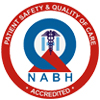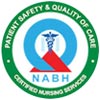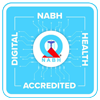
One of the most common conditions in newborns is neonatal jaundice. Neonatal jaundice is the yellow discolouration of the skin and the eyes of a newborn baby. It is seen in 50-60% of normal newborns in the first week of life. This is not caused by the usual diseases that occur in adults and therefore, it’s called physiological jaundice, meaning it is jaundice not caused by disease.
Physiological jaundice usually appears after the first 24 hours, it peaks by day 3 of life and disappears by day 5. Most often, jaundice completely disappears by the second to third week of life, except in preterms which may last up to 4 weeks. Most babies do not need any specific treatment. However, contrary to popular belief, just exposing jaundiced babies to sunlight may not be enough. Medical attention should not be delayed. Here are some common questions about newborn jaundice and its treatments:
What causes jaundice?
Normally, red blood cells are broken down and the yellow pigment called bilirubin released is processed further in the liver and is passed in the stools and urine. The liver of a newborn baby usually takes a week or two to mature enough to be able to process the bilirubin. Though newborn jaundice is generally harmless, there are other more dangerous conditions that can cause worsening of the conditions. Sometimes, an increase in the breakdown of red blood cells (blood group incompatibility) or liver disease can be the reason.
As it is not possible for you as a parent to know the difference between physiological jaundice and something more serious, it is always advised that your baby be assessed by the doctor so that necessary tests can be run.
Is jaundice harmful to my baby?
Largely moderate levels of jaundice, which usually occurs in normal babies, are not harmful. Sometimes, it exceeds the threshold level and such cases need intervention. However, various graphs are available which help us identify the level of jaundice that actually needs intervention.
When does my baby need to be seen by a healthcare provider?
Bring your baby to the hospital in the following situations:
- Jaundiced skin appears within the first 24 hours
- When it spreads throughout the body
- If the baby is not feeding well or is sleepy or unwell
- If the baby passes dark urine or pale stools
- If the jaundice persists for more than 2 to 3 weeks
How is jaundice treated?
There are various ways in which newborn jaundice can be treated. The most common treatment/intervention is phototherapy. Exchange transfusion is another option that is available. Sometimes, certain drugs like Phenobarbitone have been used for the treatment of jaundice. Regular feeding is important as it helps the baby pass the waste product in the stools.
What is phototherapy and how does it work?
Phototherapy is a special bright light that shines on your baby’s skin, changing the chemical structure of bilirubin so that it is passed in the stools and urine. It is usually administered through an overhead light or by a special mat or pad. The baby is placed with its skin exposed, wearing only an eye-pad and a nappy/diaper.
Are there any side effects of phototherapy?
Yes, there are minimal side effects to phototherapy such as the baby developing skin redness, increased water loss from the body leading to weight loss, and retinal damage (to avoid this is why their eyes are covered).
Gynaecological emergencies include:
- Ruptured tubal pregnancy
- Miscarriage
- Ovarian torsion (adnexal torsion)
- Ruptured ovarian cyst
- Haemorrhagic ovarian cyst
Obstetric emergencies include:
- Placental abruption
- Placenta previa
- Eclampsia
- Obstructed labour
- Cord prolapse
- Postpartum haemorrhage
- Gynaecological emergencies: How they are handled
In cases like a ruptured tubal (ectopic) pregnancy, which poses as a high-priority gynaecological emergency, the patient may not be responsive when brought in due to shock from immense blood loss. The first step when a patient is brought in to the ER unresponsive is to resuscitate them. Upon resuscitation, an immediate blood transfusion might be required if the blood loss is significant. Once the patient is stabilised, an ultrasound scan of the pelvis is performed using the portable ultrasound scanner to make a faster diagnosis. If the patient requires surgery to stop the bleeding, then they are taken to the operation theatre.
Other gynaecology-related emergencies, like ovarian torsion, ruptured ovarian cyst and haemorrhagic ovarian cyst, may only present with non-life-threatening symptoms like severe pain, abdominal swelling or bloating, fever and nausea/vomiting. This gives the doctors more time to assess the situation, take the patient’s vitals and a detailed history and then begin the appropriate treatment.
Obstetric emergencies: How they are handled
On the other hand, obstetric emergencies are considered more serious as these conditions can pose a risk to both the mother and her unborn child. An emergency delivery of the baby that might be premature (26-37 weeks) might be required to save both mother and child in many cases. With a level-III Neonatal ICU in the hospital, the decision can be taken with more surety. It is crucial to examine the mother and perform an immediate scan so as to decide if she should be taken to the labour ward or the operation theatre for an emergency C-section.
Conditions involving the placenta may require immediate delivery by C-section and possible blood transfusion due to heavy blood loss. Placental abruption is a condition where there is profuse bleeding behind the placenta leading to the formation of big clots. Placenta previa is a condition where the placenta is low-lying and it starts bleeding. Both these conditions cause torrential bleeding that can threaten the life of the mother and may also threaten the life of the baby. Some women, who have been diagnosed with sudden high blood pressure during pregnancy, present in the hospital with eclampsia. It results in seizures before, during or after delivery and such cases require immediate intensive care
Dengue, a mosquito-borne illness caused when a virus-carrying mosquito bites a healthy person resulting in mild to severe dengue fever. Dengue hemorrhagic fever may lead to major severe health illnesses and complications.
How do I know if I have Dengue?
Like many flu or influenza viruses, dengue starts from fever. The symptoms increase after 4 to 10 days of exposure to the mosquito bite. Dengue symptoms include high fever, headache, severe body and joint pain, nausea, vomiting, pain behind your eyes and rashes.
In children, they come with fever, rashes and fatigue. The symptoms may also include decreased activity and being prone to fatigue. If you are experiencing these symptoms, please consult your nearest practitioner,
How do I know if Dengue is serious?
Dengue fever may develop into a potentially fatal illness. Listed are the warning signs to look out for
- Severe stomach pain
- High-grade fever
- Bleeding from gums and nose
- Continuous vomiting
- Rapid breathing
- Irritability and restlessness
Diagnosis
Clinical lab test, specific test like dengue ns1 antigen test can be done within 24 hours from onset of disease (first 4 – 5 days of infection). Serology test like IGM dengue (from 5th day of illness) and additional markers test (blood counts) confirms the presence of dengue virus. Once confirmed rush to the hospital and seek proper medication as directed by the physician.
How can I protect myself from Dengue?
One of the best ways to prevent dengue can be by avoiding mosquito bites. Always and always maintain good hygiene practice. Since stagnated waters are the breeding pot of the mosquitoes, refrain from being in contact with those areas. Due to the rainfall, if you are staying near the waterlogged locality, remember to
- Wash your hands
- Have a mosquito coil/mosquito nets
- Use mosquito repellent
- Devotedly follow sanitization
- Keep windows closed
- Wear protected clothing
Do home remedies lessen the severity of Dengue?
Home remedies like kabasurakudineer, papaya leaf extract and nilavembukudineer are recommended for everyone since they contain antiviral properties*. However, for a dengue affected patient, it is advised not to rely on the remedies and requested to seek medical help from their practitioner to enhance their health. Home remedies work for prevention than cure.
Diet during Dengue
Intaking strong immunity provider foods support your body to prevent and cope up with the disease. Incorporate citrus food and green leafy vegetable into your diet. Avoid spicy, oily and fried food that may induce gastritis.
Anxiety and stress can worsen physical wellbeing, take proper guidance by the doctor and prevent the risk of being infected from the virus.
Omicron Variant is a new strain of the COVID-19 virus that is spreading rapidly and is causing major health issues not only across the country but across the world. With the alarmingly rising cases, it is safe to say that pandemic is here to stay for some more time. So the days of following all the safety precautions of masks, handwash, sanitizers and distancing are far from over.
Omicron in India tally has crossed the 1800 mark and is showing no signs of slowing down. While the doctors and other medical experts figure out the best way to deal with the virus, let’s find out all the critical factors about the virus that may come in handy.
Effectivity:
The virus is widely considered to be mild and less severe compared to the Delta variant but is yet to be officially labelled. So it is best to approach this as just another virus that requires the same amount of caution.
But on the flip side, it is spreading rapidly and will outrun the pace of Delta in terms of how fast it is spreading among the masses. The current tests, PCR and antigen-based rapid diagnostic tests that were being done right from the beginning to detect COVID 19 are still effective against them when it comes to detecting the Omicron variant.
Symptoms:
According to various tests so far, the most common symptoms of the Omicron variant are:
- Cough
- Runny Nose
- Fever & Headache
- Fatigue
Unlike the previous variants, the loss of smell and loss of taste is a rare phenomenon, but this is still an early stage, and there is a lot more to uncover.
Prevention:
Preventive measures against Omicron are the same as they have been against every variant of Covid-19 so far. Here is a quick brief:
- Wear a mask and cover your mouth and nose
- Wash your hands regularly, especially after coming from outdoors
- Maintain at least 1 metre of physical distance
- Carry and use hand sanitizers
- Avoid crowded places
- Ensure the space you are in is properly ventilated
- Get vaccinated
The variant is still fairly new, so there is a lot we might not know about the variant. But on the positive side, doctors and scientists are now more prepared and ready for this COVID wave than they were 2 years back.
All in all, there are many questions that are yet to be answered. Like, what is the cure? Will the booster vaccines protect us from Omicron? How severe or deadly it is? And many more.
Only one thing clear is, vaccines are still able to prevent serious infections in the variants.
Till then, let’s take all the safety measures at our disposal. Follow the preventive measures, obey the guidelines in public places, and adhere to the policy the government implements.
Strokes are one of the leading causes of death around the world, but despite this, most people don’t know how to identify a stroke. If identified early enough and treated within the ‘Golden Hour’, the effects of a stroke are often reversible. All you need to do is BEFAST in identifying the main signs of a stroke.
- B – Loss of balance
- E – Blurry vision
- F – Drooping on one side of the face
- A – Numbness of an arm
- S – Slurred speech
- T – Time to act
Stroke and its treatment
A stroke occurs for one of two reasons, there is either lack of blood flow to the brain or the brain suffers a haemorrhage. A haemorrhagic stroke can either be because of a ruptured aneurysm, a bleed in the brain due to high blood pressure or any other vascular problems like arteriovenous malformations (AVMs) and other tumours.
The treatment of a stroke begins in the CT room. Once the CT scan is done, if no bleeding is visualised, tissue plasminogen activator (tPA) (a medication to dissolve clots) is given intravenously. After this, a CT angiogram is performed to check whether there is a block of a small vessel or a large vessel. If there is a block of a large vessel, the patient is shifted immediately to the Cath Lab where neurological intervention is done and the clot is cleared immediately. The patient is then moved to the Neuro ICU where they are monitored for progress.
Neuro emergencies beyond a stroke
After stroke, head injuries are the next common type of neuro emergencies, followed by seizures. In the event of a trauma — road traffic accident or otherwise — resulting in head injury, the hospital’s trauma protocol is put into effect. In any major trauma, the Neurosciences team, the Orthopaedic team and the General Surgery team are all called in to assess the patient. A pan CT is performed which will tell all the teams, in just a few minutes, where the problems lie. Is there a head injury, is there a cervical spine injury, is there an abdominal injury? From this understanding, a treatment plan is put together.
When a patient who has had a seizure is brought in, the most important step is to stabilise the patient in the ER. Once the patient is stable, a CT scan is done and then the patient is shifted to the Neuro ICU. Based on the cause of the seizures, it is decided whether the neurologists need to be involved or the neurosurgeons. The reason a CT scan is preferred over an MRI for the first imaging is because a CT scan is faster. Once the patient is stabilised in the Neuro ICU, an MRI can be done to understand more about the patient’s condition.
-

Share with us
Click Here -

Organ Transplantation
Click Here
Copyrights © 2025 PSG Hospitals. All Rights Reserved.









